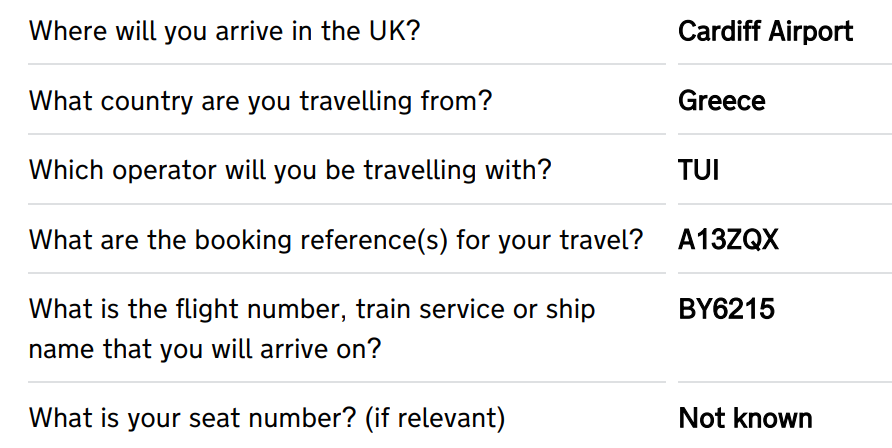Zante ‘virus flight’ reveals shortcomings in tracking arriving travellers
Public Health Wales says some travellers aboard flight from Greece to Cardiff will not be contacted until a week after they returned

A senior public health figure has made extraordinary revelations about the system for tracking and tracing travellers arriving in the UK.
After 16 cases of coronavirus were linked to TUI flight 6215 from Zante in Greece to Cardiff on Tuesday 25 August, Public Health Wales has decided to go public in order to trace all 193 passengers and crew on board.
Everyone arriving in the UK is required to complete a “passenger locator form” (PLF) providing all their contact details – as well as the flight number and arrival time.
Dr Gwen Lowe, consultant in communicable disease control with Public Health Wales, told the BBC Today programme that some of the travellers will not be contacted until a week after the flight.
She said: “We have around 16 cases that are linked to people who took that flight back from Zante.
“Of those 16 cases, we know that seven of them were infectious, or potentially infectious, whilst actually on the flight.
“Those seven people come from three separate groups of individuals who travelled separately, had separate travel arrangements, but caught that flight together.
“As soon as we are aware that we have cases in clusters, we contact the other people who travelled back and we advise them that they are now contacts and they now need to isolate for up to 14 days.
“We need to reach all 193. We’re in the process of doing that now.
“One of the reasons we announced this publicly was to try and get the people quickly.
“We have booking details, we have passenger locator forms, we’re working our way through these forms now and putting them into ‘track, trace and protect’.
“They will all get a call from ‘track, trace and protect’ in the next 24 hours or so. The problem is that people don’t always have their phones on, it’s bank holiday Monday, they may not be available.”
The PLF was launched when the UK government introduced the blanket quarantine scheme in June. Even though passengers arriving from countries including Greece have been made exempt from the need to self-isolate, all travellers must complete the form. A penalty of £100 applies for non-compliance.
The information is passed to public health authorities in the four UK nations.
A campaigner for testing on arrival in the UK, Paul Charles, said: “If speedy UK airport arrival testing was in place, combined with a second test five days later, then I’m sure health authorities would have picked up the majority, if not all cases promptly.
“Instead those positive have been mixing in their communities for several days.
“This Tui flight is absolute proof of why the government should implement airport testing now, as over 30 other countries have already done.”
“The current system is the tortoise. But you can have the hare with airport arrival testing. And speed is the essence when it comes to coronavirus.”
The Independent is seeking clarification from Public Health Wales about when the infections became known.
Tui, the airline which operated the flight, has been criticised for failing to enforce the rule on wearing face coverings.
One passenger, Stephanie Whitfield, told Today: “Many passengers didn’t seem to know how to wear the masks correctly or they seemed to disregard the rules.
“Lots of people were wearing the masks underneath their noses or underneath their chins. They were taking their masks off to talk to friends, and going up and down the aisle to talk to their friends without their masks on.
“The crew came round once to ask one lady to put her mask on.”
The Boeing 737 had only two empty seats during the flight, which lasted three hours 42 minutes.

A spokesperson for Tui said: “The health and safety of passengers is always our priority and we are concerned to hear of Mrs Whitfield’s claims.
“Our crew are trained to the highest standards and in line with European Union Aviation Safety Agency (Eesa) guidelines. Passengers are informed prior to travel and via PA announcements on the flight that they have to wear masks throughout and are not allowed to move around the cabin.
“Masks can only be removed when consuming food and drink. A full investigation is now underway as these concerns weren’t reported during the flight or before today.”
Join our commenting forum
Join thought-provoking conversations, follow other Independent readers and see their replies
Comments